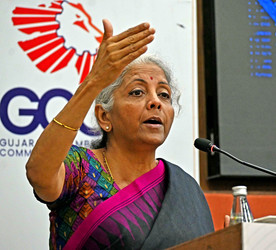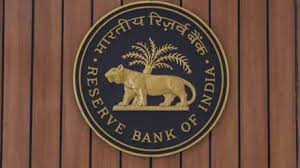
Govt policies boost manufacturing and services
The government has implemented a series of policies designed to bolster both the manufacturing and service sectors, aiming for comprehensive economic growth. These policies encompass a range of initiatives, from financial incentives to regulatory reforms, all geared towards creating a more favourable environment for businesses to thrive. FM Sitharaman has been a key proponent of these strategies, emphasizing the importance of a multi-pronged approach to economic development.
A central tenet of the government’s approach involves targeted support for specific industries. This includes streamlining bureaucratic processes, reducing compliance burdens, and fostering innovation through research and development grants. The policies aim to attract both domestic and foreign investment, thereby increasing capacity and competitiveness within the manufacturing and service sectors. These measures are designed to unlock the full potential of the Indian economy.
To boost manufacturing in the country, India is focussing on 14 priority sectors or sunrise sectors like electronics, semi-conductors, and pharma. The government is also actively working on improving infrastructure, including transportation and logistics networks, to facilitate the smooth movement of goods and services across the country. This infrastructure development is considered crucial for supporting the long-term growth of both the manufacturing and service sector, and enhancing India’s position in the global economy.
Manufacturing Sector Growth
The government’s commitment to enhancing the manufacturing landscape is evident in the tangible growth observed across various sub-sectors. Specific policies, such as the Production Linked Incentive (PLI) scheme, have incentivised domestic production and attracted significant investment in key areas. The PLI scheme offers financial support to companies that meet certain production targets, encouraging them to expand their operations and increase output. This has been particularly effective in sectors like electronics and automotive, where India is striving to become a global manufacturing hub.
The automotive industry, for example, has witnessed a surge in manufacturing activity, driven by both domestic demand and export opportunities. The government’s support for electric vehicle (EV) production has further boosted the sector, with several companies announcing plans to manufacture EVs and related components in India. This push towards sustainable transportation is not only benefiting the manufacturing sector but also contributing to environmental goals.
Furthermore, the focus on skill development is playing a crucial role in supporting manufacturing growth. Initiatives like the Skill India Mission are equipping the workforce with the necessary skills to meet the evolving demands of the industry. By providing training and vocational education, the government is ensuring that the manufacturing sector has access to a skilled labour pool, which is essential for maintaining competitiveness and driving innovation. FM Sitharaman has emphasised the importance of a skilled workforce in achieving the government’s manufacturing goals.
Services Sector Expansion
The service sector, a cornerstone of the Indian economy, has also experienced substantial expansion due to targeted government policies. This growth spans across various sub-sectors, including IT, tourism, healthcare, and financial services. The government’s focus on creating a conducive environment for businesses has been instrumental in attracting investment and fostering innovation within these areas.
The IT sector, in particular, has been a major beneficiary of the government’s support. Policies aimed at promoting digital infrastructure, such as the BharatNet project, have enhanced connectivity and accessibility, enabling IT companies to expand their reach and offer services to a wider customer base. Furthermore, the government’s emphasis on skill development in emerging technologies like artificial intelligence and machine learning has ensured that the IT sector remains competitive on a global scale. This has resulted in significant export growth and job creation within the sector.
The tourism sector has also witnessed a resurgence, with the government actively promoting India as a preferred tourist destination. Initiatives like the “Incredible India” campaign and the development of tourism infrastructure have attracted both domestic and international tourists. The government’s efforts to improve connectivity, including the expansion of airports and the development of tourist circuits, have further boosted the sector. This growth in tourism has not only generated revenue but has also created employment opportunities in related industries such as hospitality and transportation.
Moreover, the government has been actively working on reforms in the financial services sector to enhance its efficiency and stability. Measures such as the introduction of digital payment systems and the promotion of financial inclusion have transformed the landscape of the sector. The government’s support for fintech companies has fostered innovation and competition, leading to improved services and greater accessibility for consumers. FM Sitharaman has highlighted the crucial role of the service sector in driving overall economic growth and creating employment opportunities.
Economic Impact Analysis
The government’s policies aimed at boosting both manufacturing and the service sector are having a discernible impact on the overall economy. Analysis reveals a positive correlation between these policies and key economic indicators, such as GDP growth, employment generation, and investment levels. The increased activity in both sectors is contributing to a more robust and diversified economy, reducing reliance on specific industries and creating a more resilient economic structure.
Specifically, the manufacturing sector’s growth is translating into increased production, higher export volumes, and greater employment opportunities, particularly for skilled and semi-skilled workers. The Production Linked Incentive (PLI) schemes, for example, are not only attracting investment but also fostering technological upgrades and innovation within the manufacturing sector. This is leading to enhanced competitiveness and a greater ability to meet both domestic and international demand.
Similarly, the expansion of the service sector is driving economic growth through increased exports of IT services, tourism revenue, and financial service activities. The government’s support for digital infrastructure and skill development is ensuring that the service sector remains a key engine of growth, contributing significantly to GDP and creating high-value jobs. Furthermore, the growth in the service sector is also supporting the manufacturing sector by providing essential services such as logistics, transportation, and financial support.
FM Sitharaman has emphasised that the combined impact of these policies is creating a virtuous cycle of economic growth. Increased investment and production are leading to higher incomes and greater consumer spending, which in turn is driving further growth in both the manufacturing and service sectors. This positive feedback loop is essential for achieving sustainable and inclusive economic development, ensuring that the benefits of growth are shared across all segments of society. The government continues to monitor the impact of its policies and make adjustments as needed to ensure their effectiveness and maximise their contribution to the economy.
Future Policy Directions
Looking ahead, the government is committed to refining its policies to ensure sustained growth in both the manufacturing and service sectors. A key focus will be on streamlining regulatory processes further, reducing compliance costs, and fostering a more business-friendly environment. The aim is to attract even greater levels of domestic and foreign investment, thereby boosting capacity and competitiveness across various industries. FM Sitharaman has repeatedly stated the importance of adaptability and responsiveness in policy-making, emphasizing the need to continuously assess and adjust strategies based on evolving economic conditions and global trends.
One area of particular attention will be promoting innovation and technological advancement. The government plans to increase investment in research and development, support start-ups, and encourage collaboration between industry and academia. This will involve creating a more conducive ecosystem for innovation, including strengthening intellectual property rights and providing access to funding and mentorship. The goal is to position India as a global hub for innovation, attracting talent and investment in cutting-edge technologies.
Furthermore, the government recognises the importance of addressing infrastructure gaps to support long-term economic growth. Plans are underway to further improve transportation networks, enhance digital connectivity, and upgrade energy infrastructure. This includes expanding highways, railways, and airports, as well as investing in renewable energy sources and smart grid technologies. These infrastructure improvements will not only facilitate the movement of goods and services but also improve the overall quality of life for citizens.
Skill development will remain a top priority, with the government aiming to equip the workforce with the skills needed to meet the evolving demands of the manufacturing and service sectors. This will involve expanding vocational training programs, promoting apprenticeships, and fostering closer collaboration between industry and educational institutions. The goal is to create a skilled labour pool that is capable of driving innovation, enhancing productivity, and supporting the growth of high-value industries. The government’s continued support in these areas will be crucial for ensuring the long-term competitiveness of the Indian economy.













